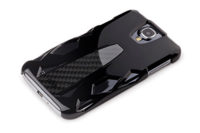
Structural bonds are used to join critical load-bearing parts of an assembly. The adhesive technology for such bonding replaces (or in some cases, augments) methods such as riveting, welding or mechanical fastening with bolts and screws. It is worth noting that adhesive and other joining methods can work together. While adhesive bonding provides sufficient strength, the addition of a few appropriately placed rivets provides instant alignment, jigging and clamping advantages.
To meet the requirements of structural applications, suitable adhesives must have a combination of high shear, tensile and peel strength, along with maximum stress, impact, and shock absorbent capabilities. Because this particular set of criteria is not always easy to combine, structural adhesives feature a range of differing product characteristics and chemistries. In addition, they are designed to bond a diverse selection of materials, including composites, wood, metal and glass.
Structural adhesives also provide benefits over conventional methods of joining that include reduced weight, improved fatigue resistance, uniform stress distribution and the ability to join dissimilar materials. In many instances, less critical tolerances can be specified because of the gap-filling capability of many structural adhesives. Structural adhesives can fall into five technologies: epoxies, acrylics, polyurethanes, modified silanes and silicones. Why is such a variety needed, and where is each adhesive used?

Structural adhesives can provide benefits such as reduced weight, improved fatigue resistance, uniform stress distribution and the ability to join dissimilar materials.
Examining Epoxies
When it comes to high-strength structural bonding, epoxy resins are the acknowledged leader. They can be found in industries as varied as aerospace, automotive, marine, oil drilling, leisure goods, civil engineering, electronic assembly and medical device manufacturing. Epoxies are available in two-component, room-temperature-curing formulations or one-component, no-mix, heat-curing variations. Epoxy formulation comes with a huge degree of freedom, and virtually any characteristic can be formulated on demand.Structural epoxies are generally slower to cure than other technologies, but this makes them ideal for complex applications where a significant period of time is required for assembly purposes. Fast curing is not always an advantage.
In one epoxy application example, a manufacturer uses a structural two-part epoxy for bonding magnesium, aluminium and composite components in the fabrication of its super-lightweight bicycle forks. Adhesives allow the seamless bonding of these structural substrates to provide an immensely strong and lightweight structure. According to the viscosity of the selected product and the joint geometry being bonded, different application techniques (e.g., injection or bead application) can be used.
Another company uses an epoxy to secure the shaft of an ice axe to the head. This joint takes the full impact when the axe is dug into ice and snow. The substrates involved are steel and aluminium, which have a tolerance of 0.15 mm. The epoxy provides a secure bond and hermetically seals the joint against water ingress. For even greater security, the joint is then riveted-a good example of two technologies complementing each other.
Acrylic Assurance
Unlike two-part epoxies, which require the resin and hardener to be mixed before application, some two-part acrylic adhesives provide the benefit of a “no mix” application process. In this process, the adhesive and initiator are applied to opposite faces of the joint. They are suitable for bonding a range of materials and are regularly used for sheet metal, especially on applications where the substrates might flex. Some grades of toughened acrylics can be used on “as received” steel and will withstand paint bake cycles. Toughened acrylics are often used in place of spot weld or blind rivets, especially where the appearance of the finished product is important, or where there is a requirement to spread any load over a wider area and reduce stress concentrations.A key characteristic of the acrylic family is their speed of set. Handling strength is generally achieved in less than 30 minutes at room temperature, thus allowing these adhesives to be used where speed of manufacture is an important requirement. Another major benefit of using toughened acrylics on sheet metal applications is their superior ability to deaden sound, compared to traditionally fastened metal sections.
Applications that have embraced the use of toughened acrylics include the bonding of office partitions, air conditioning units and garage doors. One specific application involves the construction of a folding ramp that allows wheelchairs and prams to have easy access onto buses. The design calls for a cassette-type unit that is light, compact, flush-fitting and modular. This ramp also needs to be dropped straight into the vehicle chassis and connected to the operating mechanism during bus construction. Aluminium is used for lightness within the base and ramp floor, while the frame is formed using steel. To achieve the required strength, the floor is stiffened with an interfacing box section and wedge-shaped stringers (also manufactured from aluminium).
Rivets were first considered for this assembly process. However, the number that would have been required was prohibitive, and they would have spoiled the appearance of the ramp. More importantly, when the ramp is in service, it will often need to be able to twist and flex in order to unfold onto an uneven surface. As the ramp is retracted, it will also need to return to the original shape in order to fit into its housing.
Adhesives provided the more acceptable answer. Simply applying a sheet steel bonder with an air-operated cartridge gun is enough to secure the stringers and the floor. The adhesive ensures a more flexible finished product and does not mark the surfaces. The lightweight ramp is extremely tough and withstood loads of 254 kg (560 lbs) during comprehensive testing.

A major benefit of using toughened acrylics is their superior ability to deaden sound.
Polyurethane Possibilities
Polyurethane adhesives (PUs) have large gap-fill properties and are available as one- or two-part products. These structural versions should not be confused with the elastomeric lower modulus versions. Key advantages of high-performance polyurethanes include high strength, excellent gap fill capability, low temperature performance, and the ability to bond and seal a variety of substrates.Elastomeric versions are widely known for direct glazing applications, but the structural versions are typically used for large-panel bonding applications, such as those used in the construction of refrigerated trucks. Polyurethanes are also used in building construction, machine assembly, boat building, ventilation systems and wind turbine blade construction. In this latter example, composite “stringers” are bonded inside the blade to provide stiffness and torsional rigidity. No mechanical fasteners are used in this process.
Mulling over Modified Silanes
Modified silanes cannot compete on a strength basis with any of the previously discussed adhesive groups. They can, however, bond to just about any substrate and are compatible with many paint systems. They also possess good UV resistance and can be used for interior and exterior applications.Modified silanes are primarily one-component products, although some two-part systems exist. They cure by reaction with moisture; no primer is required to achieve a good bond. However, the skin formation and curing times do depend on the ambient humidity, temperature and glue line geometry. Higher temperatures and relative humidity levels reduce cure times, while the reverse extends the cure process.
Modified silanes are odorless and are free of solvents, isocyanates, silicones, and PVC. Typical uses for modified silanes include sealing the joints and seams on containers, railway carriages, shower screens, air conditioning, and ventilation equipment.

Fast-curing elastic adhesive products can bond and seal with a high level of adhesion to metal and glass.
Silicone Suitability
Silicones, which are available in one- and two-part versions, also allow the bonding of a range of substrates. The key characteristics of this group of materials are low modulus, high elongation to failure (200-600%) and the ability to withstand temperatures of up to 250°C. Some grades even offer performance up to 350°C. Silicones are known for their good durability; they have a high gap-filling and sealing capacity and are resistant to humidity, ozone and UV radiation.Standard, single-part silicones have traditionally been relatively slow to cure and have limited cure-through volume capabilities. In addition, their adhesion qualities depend to a great extent on the substrates being bonded. Although single-component products have provided good service in diverse applications, adhesive manufacturers have invested resources in developing formulations that will overcome these “limitations” and enable silicone adhesives to be used more efficiently.
In the case of Loctite products, these improvements have centered on the creation of two-part silicone adhesives and sealants. These materials are applied from a twin cartridge using standard static mixer technology. These fast-curing elastic adhesive products can bond and seal with a high level of adhesion to metal, glass, ceramics, and most plastics and elastomers (in most cases without the need for either a primer or surface preparation). In addition, these silicones work just as effectively on narrow or wide joint application areas and achieve handling strength within minutes. The two-part formulations are based on neutral cure technology that provides significant health and safety advantages. With low odor and no release of acetic acid, metal corrosion and plastic degradation are avoided.
Typical uses for the new products include the bonding and sealing of glass and ceramic stove tops to appliance frames, securing brackets to the back of stove tops, bonding glass to microwave oven doors, and the sealing of washing machine drums. Beyond the appliance market, they can be utilized for cabinet and panel bonding and sealing, replacing gaskets and mechanical fixing, bonding glass to reflectors or frames, the assembly of light bulbs, and joining integrated electrical ballast.
Acquiring Assistance
Of course, numerous specific factors determine the choice of any adhesive technology for individual applications. Many adhesive manufacturers provide help desks where technology specialists are available to answer questions and provide advice. Through the provision of details about the application, substrates, glue line thickness, production process and other relevant factors, these specialists will likely be able to determine not only the most suitable adhesive technology, but a specific grade of adhesive within that technology as well.For more information, visit www.loctite.com.


